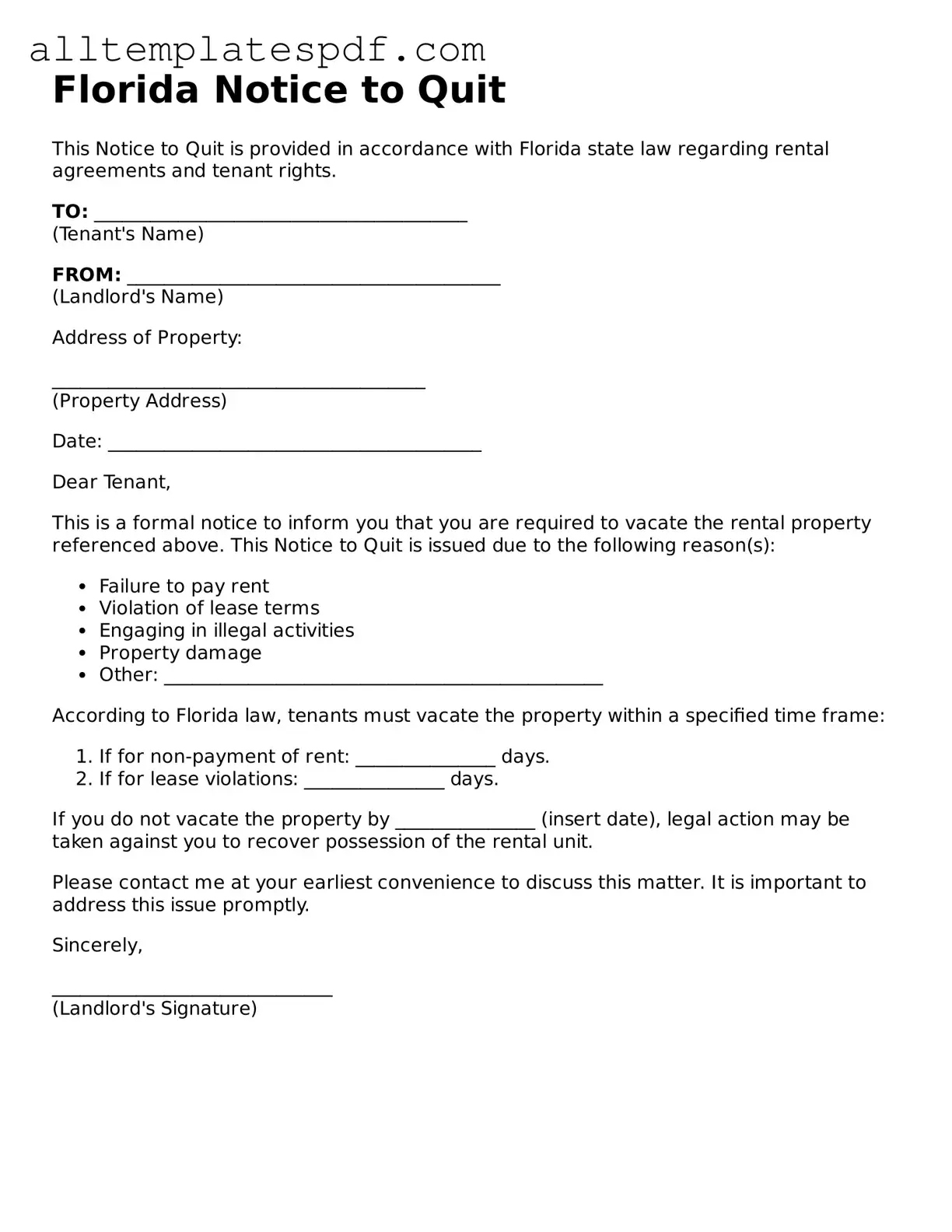Filling out the Florida Notice to Quit form can be a straightforward process, but many people make common mistakes that can complicate matters. One frequent error is failing to include the correct date. The date is crucial, as it establishes the timeline for when the tenant must vacate the property. Leaving this field blank or entering an incorrect date can lead to confusion and potentially delay the eviction process.
Another mistake is not providing accurate tenant information. This includes the tenant's full name and current address. If the information is incorrect or incomplete, it may hinder the legal process. Always double-check that the details are precise, as this ensures the notice is valid and enforceable.
Some individuals neglect to specify the reason for the notice. Whether it’s for non-payment of rent or another violation, stating the reason is essential. Without it, the tenant may not understand why they are being asked to leave, which can lead to disputes down the line.
Additionally, people often forget to sign the form. A signature is not just a formality; it validates the document. If the form is unsigned, it may be deemed invalid, rendering the entire process ineffective. Always ensure that the form is signed before it is delivered to the tenant.
Another common oversight is not providing proper delivery of the notice. Florida law requires that the notice be delivered in specific ways, such as by personal service or posting it on the property. Failing to follow these guidelines can result in the notice being challenged in court, prolonging the eviction process.
Lastly, individuals sometimes overlook keeping a copy of the Notice to Quit for their records. Having a copy can be invaluable if disputes arise later. It serves as proof that the notice was issued and can help clarify any misunderstandings in the future.
